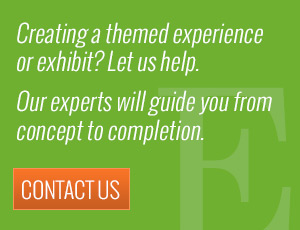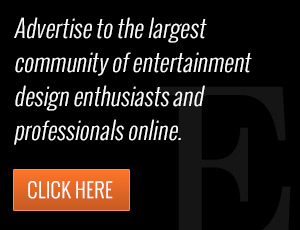Design Client Handbook: Trust Management
Posted by Sasha Bailyn on Friday, June 3rd, 2016
Over the last decade or so, the entertainment design industry has grown into developing countries and new markets at an astounding pace. As more entertainment design work goes overseas, we are challenged with confronting new channels of risk:
- The risk of opening new offices, or failing that, forging new international partnerships
- The risk of lapses between our legal system and another country’s
- For designers, the risk of misrepresenting another culture’s values and stories in their designs
But there’s a major aspect of risk-taking that doesn’t get talked about openly: the issue of trust. When getting on the phone with a potential new client, it’s common to find that there is a sense of caution and withholding information on the other end. It can take several calls and back-and-forth exchanges to get to the heart of the project. Sometimes, clients even seem reluctant to take the advice they are soliciting. This can be true when getting to know any prospective client, but is most often the case with international companies that are new to the industry.
When getting on the phone with a potential new client, it’s common to find that there is a sense of caution and withholding information on the other end. It can take several calls and back-and-forth exchanges to get to the heart of the project. Sometimes, clients even seem reluctant to take the advice they are soliciting. This can be true when getting to know any prospective client, but is most often the case with international companies that are new to the industry.
A healthy dose of caution makes sense when building a leisure destination of any scale for the first time. The client is likely to have high standards, seeking the best partners; and, discovering that the talent they seek probably lives in another country, their sense of risk is heightened.
These already-fragile power dynamics become especially tricky if the client’s country fosters a climate of distrust.
When a cultural divide comes into play, understanding the power dynamics and system of trust at play is just as important as setting out the budget, timeline, and intent for the project. Unfortunately, the rules for how “trust” is won and kept isn’t laid out in the contracts that each party signs.
The key to any good relationship is open communication. However, we’re a long way off from making that a global mantra in business. What is helpful to embrace is a culture of openness within our teams (if not with the client), where we can identify the client’s limitations and rules. In a recent conversation with a creative producer at the TEA Summit, I began to think about some guidelines for confronting and dealing with distrust:
#1 Distrust creates limitations, but creativity always comes out of confrontinglimitations.
The key is to work these limitations to our advantage. If a culture or a group isn’t willing to confront limitations or weaknesses, we need to portray them as “opportunities.” Rather than fight against the system, trying to enforce what we understand as the “right path” to success, we should figure out what the client group’s language of success is and play to it.
#2 To avoid distrust, be conscious of the client’s values.
It’s easier to overcome distrust when you are striving towards the same things. Your team might value the opportunity to create something innovative that’s never been done before, but the client may shy away from too much creativity, preferring to create the best version of an already-proven concept instead. If you champion your own values over the client’s you will never win their trust.
#3 Distrust is not “bad.”
When confronting someone’s distrust, it’s easy to feel as if we’re being labeled as “bad” in their eyes. What they’re really saying is, “‘What is important to me is not safe with you in this situation’” (according to Charles Feltman’s “The Thin Book of Trust”). Those who act out of distrust should be treated with compassion and understanding. Even though distrust feels harsh on the receiving end, it’s important to connect with the humanness of the person who’s dishing it out, even if they aren’t acknowledging our humanness at the moment.
These golden rules are the start of a growing list for how to function in a dysfunctional system. At the end of the day, we’re all taking a huge risk when we venture into a new part of the world or embark on a project that’s “never been done before.” We must take the time to understand the unspoken agreements and expectations we’re entering into: What’s at risk for the client when mistakes are made? And what is the emotional end goal of the partnership? Even the best concept art or team org charts aren’t enough to foster good working relationships, so when we can’t draw or organize away the trust issues, it’s time to reflect on the unseen dynamics.



 Sign Up For Our Newsletter
Sign Up For Our Newsletter 



